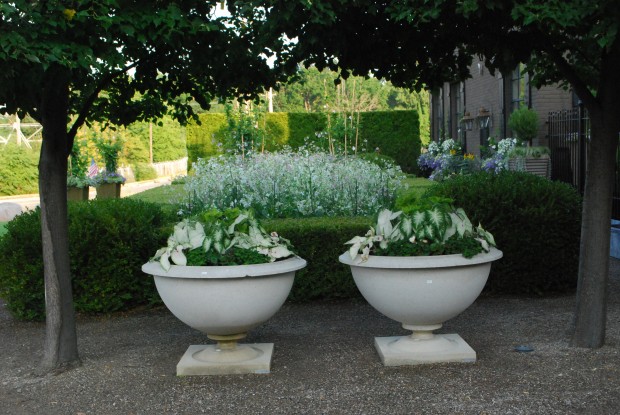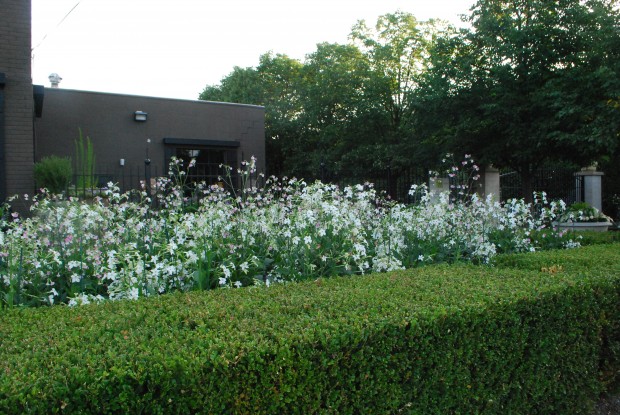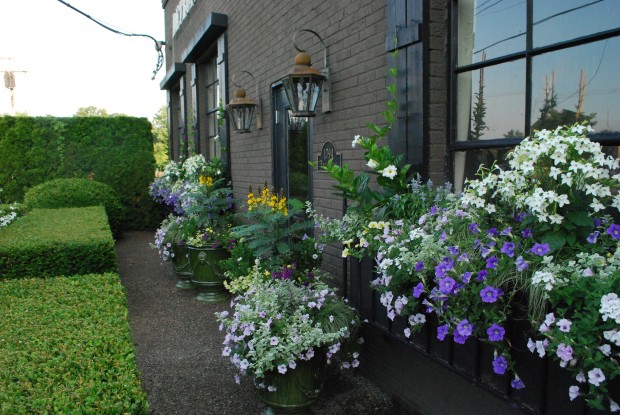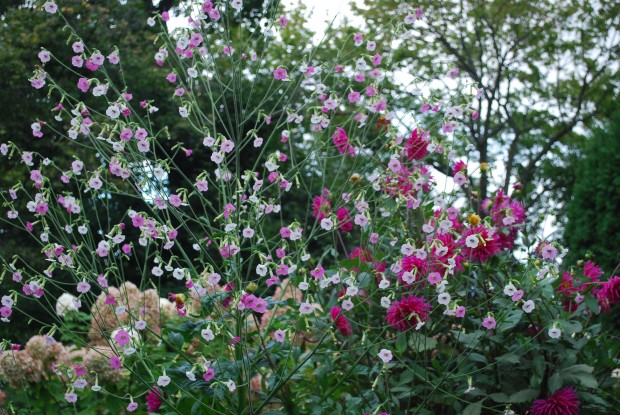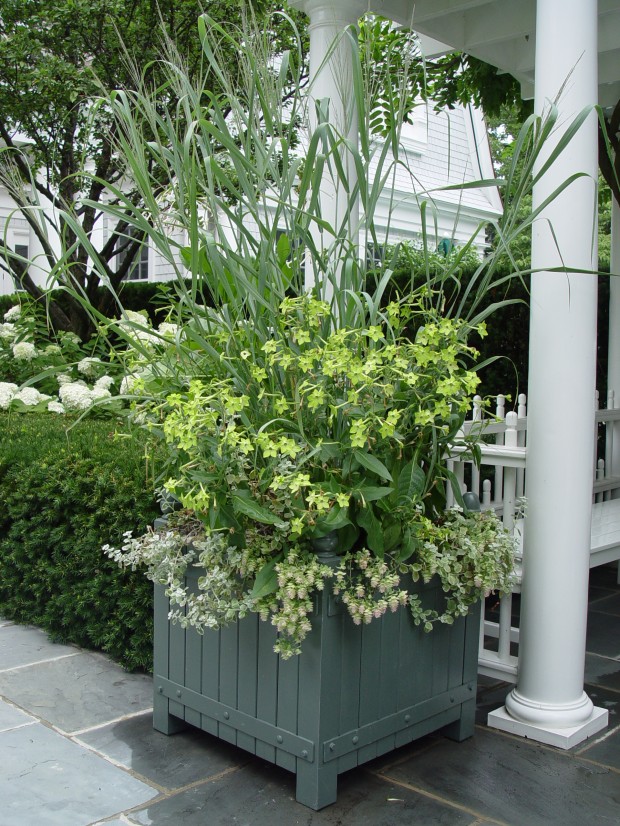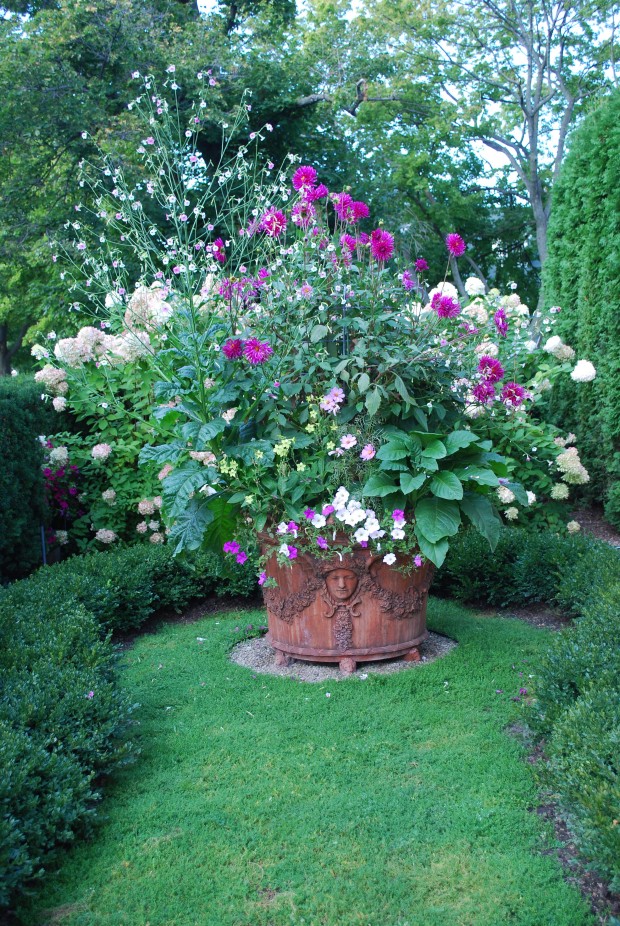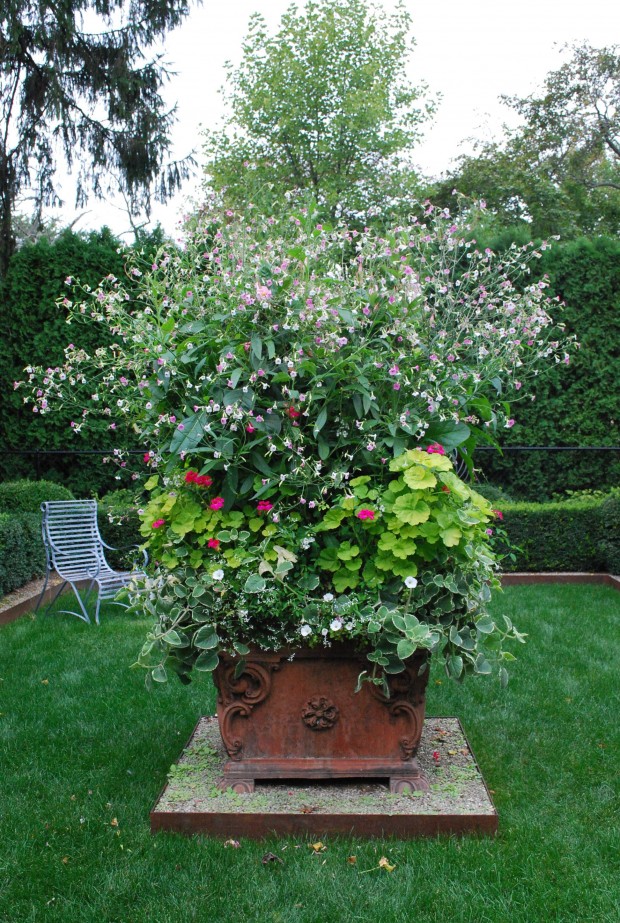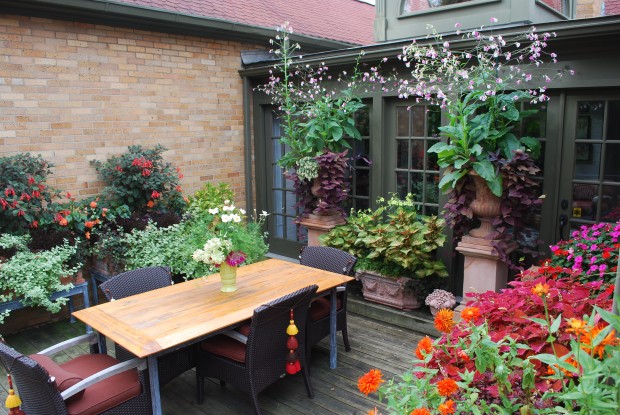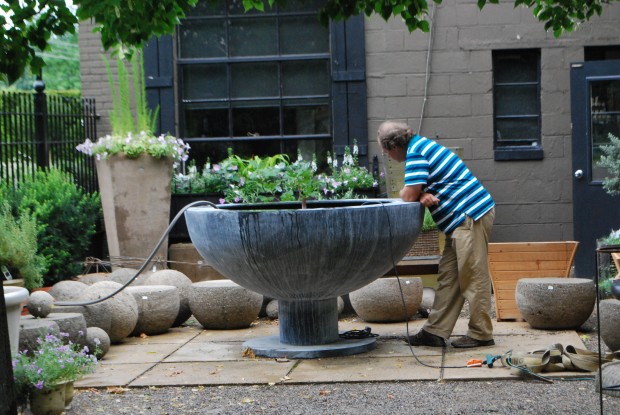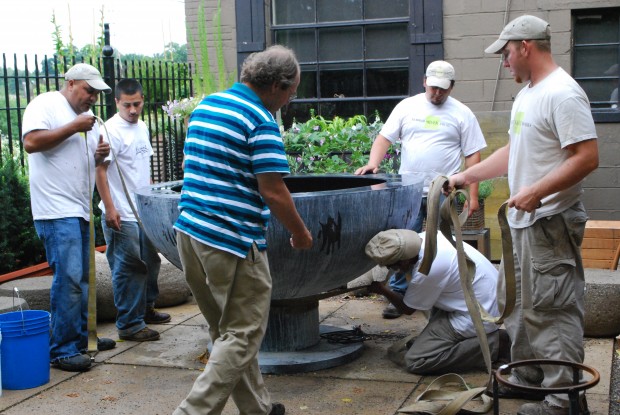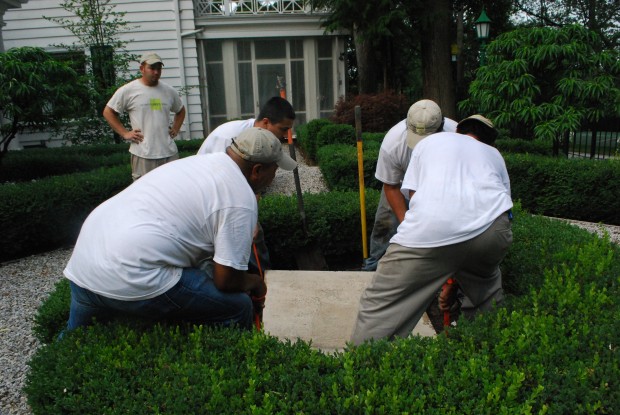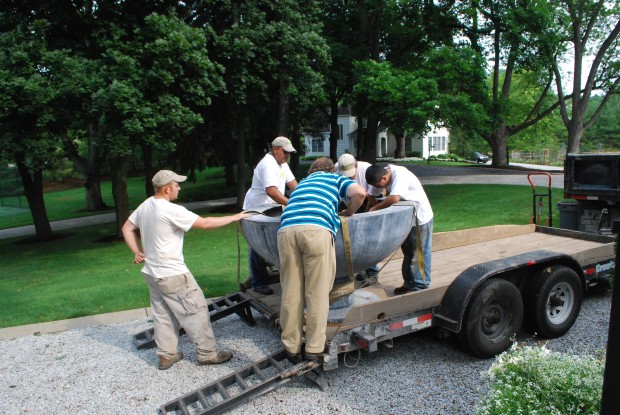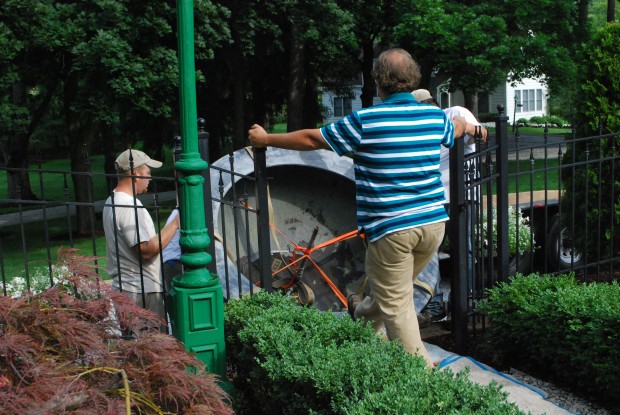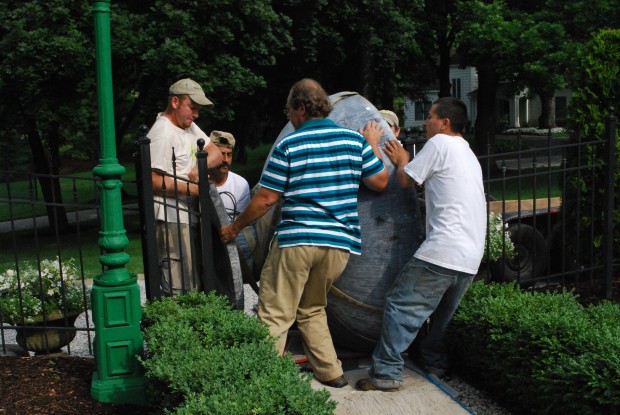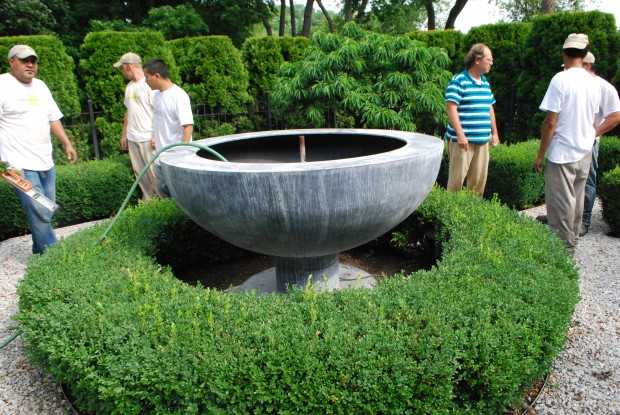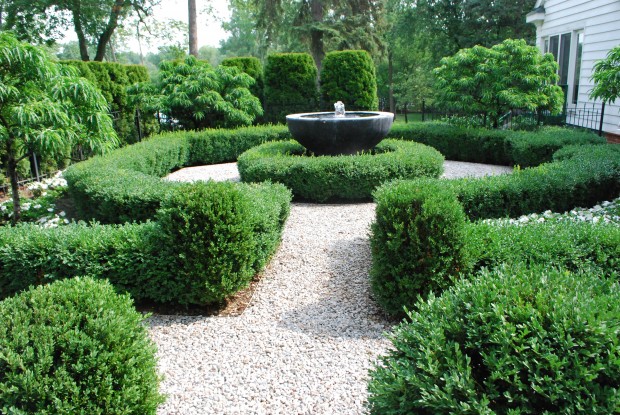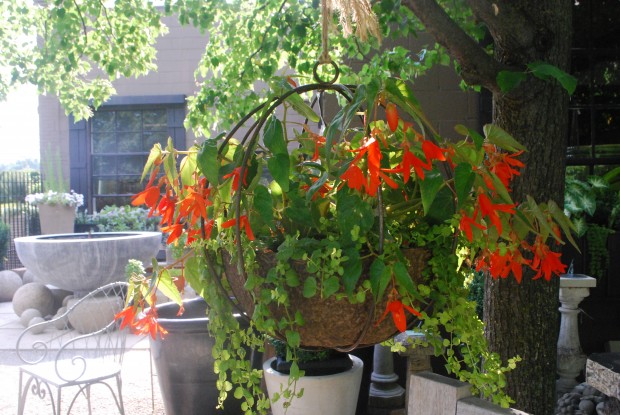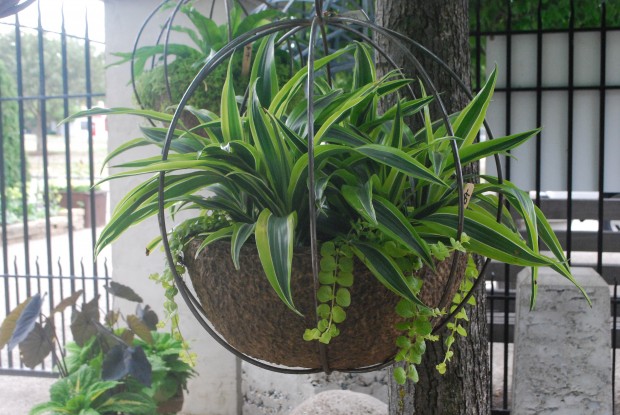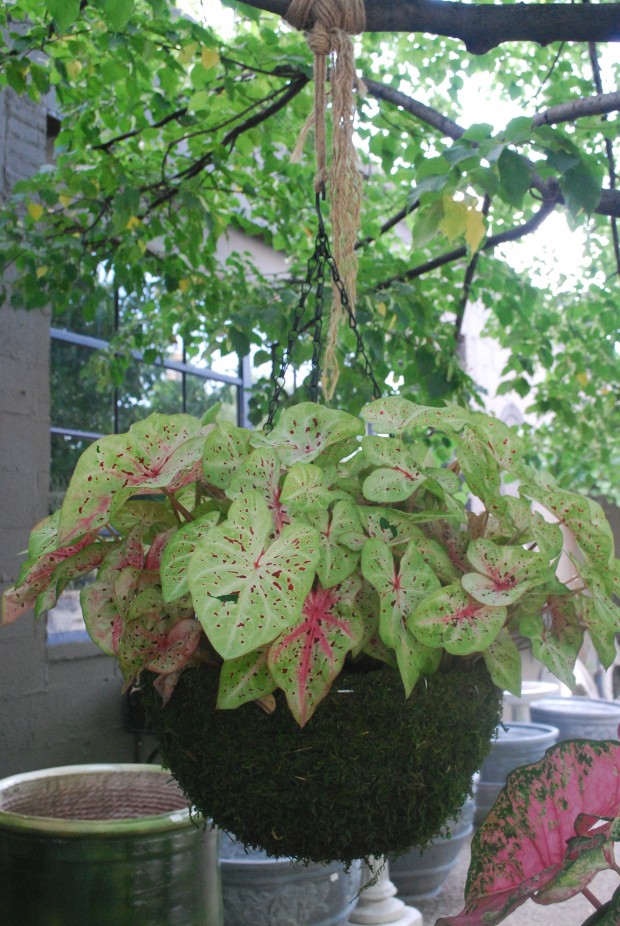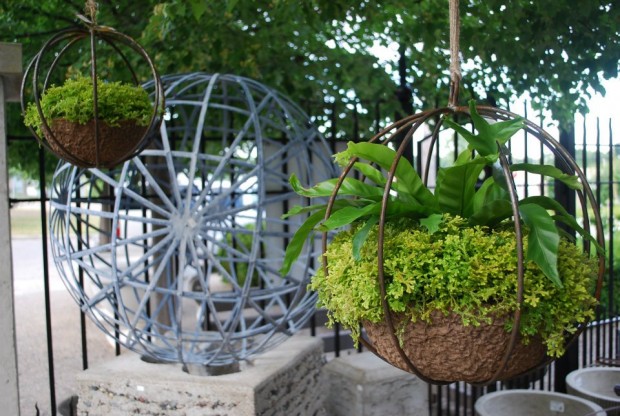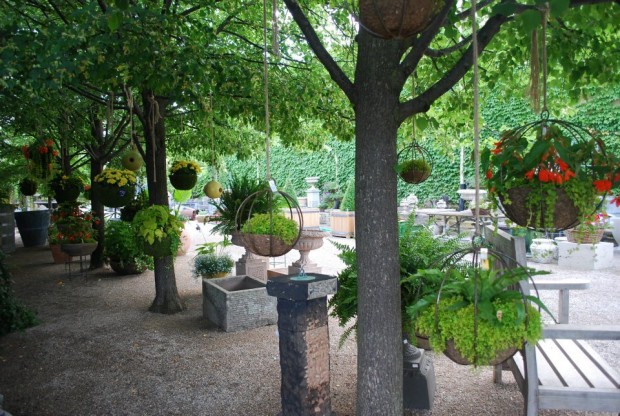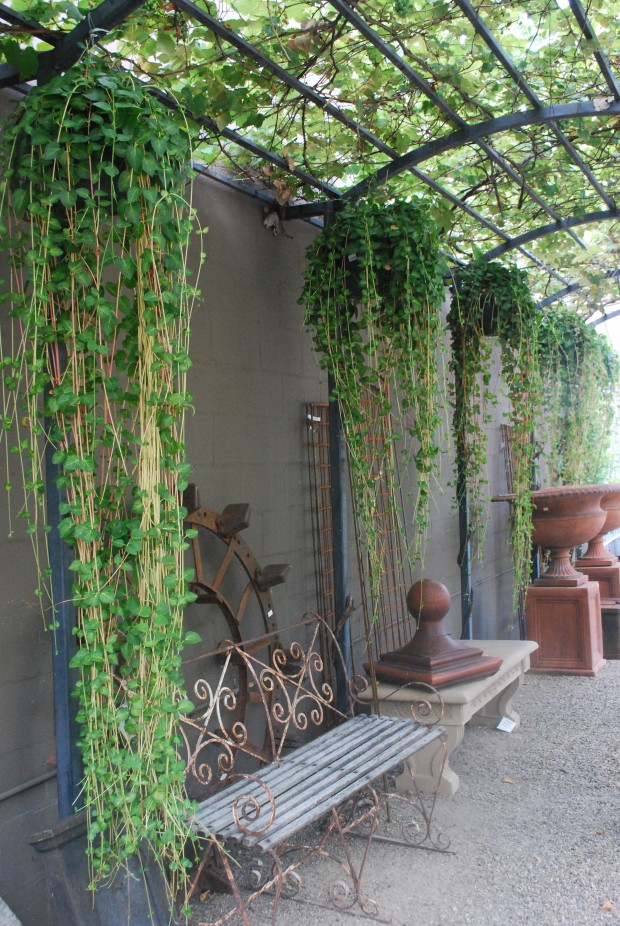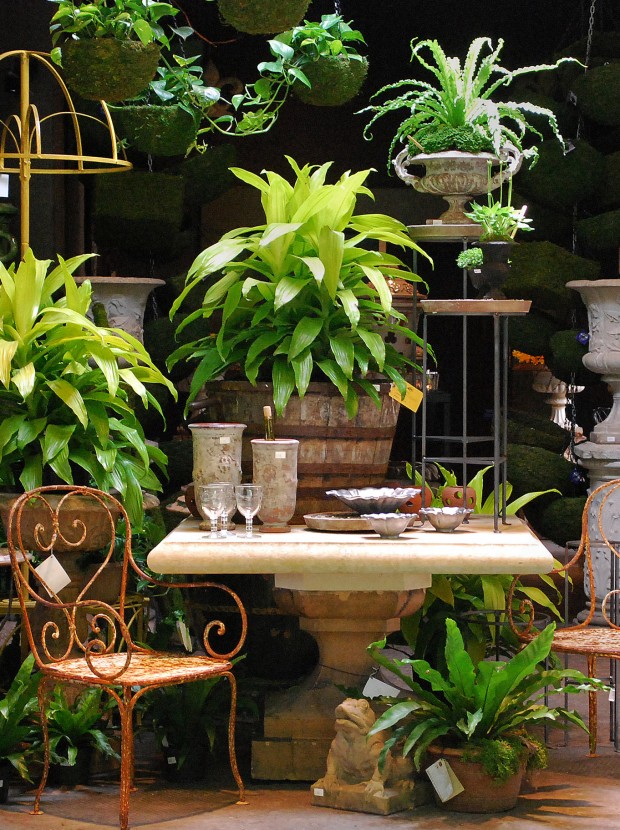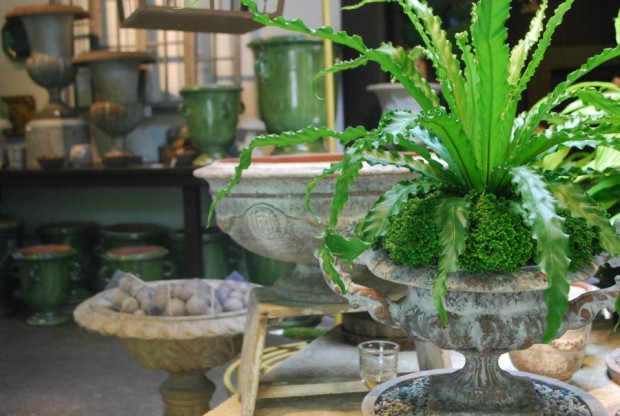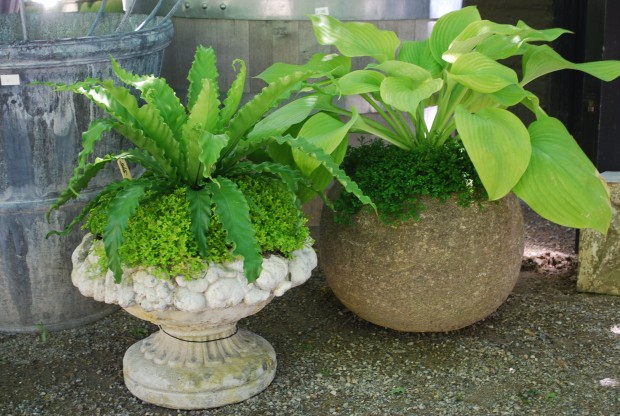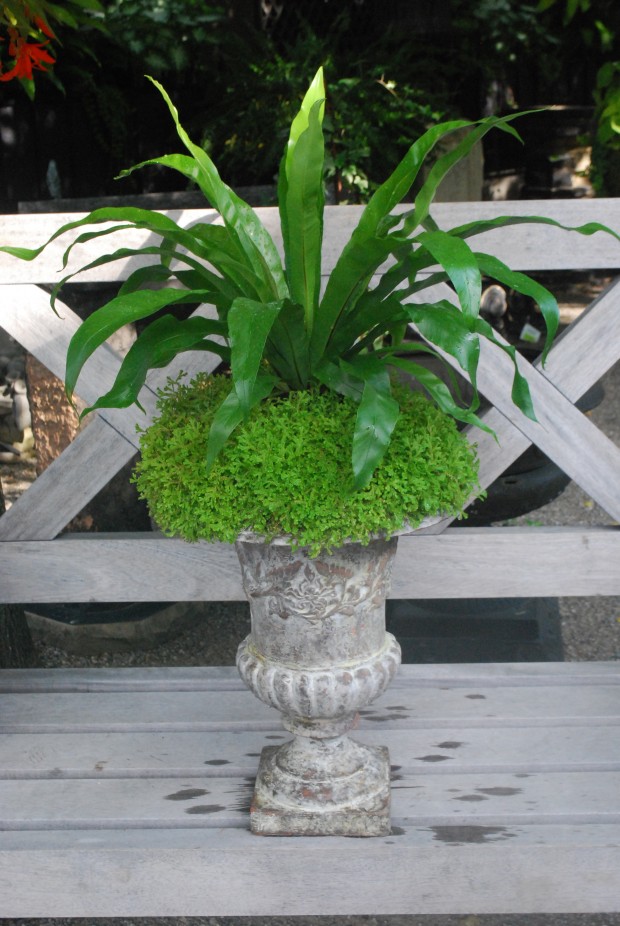Being ever so fond of all of the cultivars of nicotiana, I planted the boxwood parterre in front of the shop this year with a mix of 3 kinds. Nicotiana “perfume white” is short growing, and as fragrant as the name suggests. Nicotiana alata white is a taller, lanky growing nicotiana with larger and more widely spaced branches and flowers. Bur nearest and dearest to my heart is the big growing species, nicotiana mutabilis. I can’t manage to let a summer go by without planting it-usually in my own yard. This year I planted lots of them at the shop.
The garden had an odd look early on-every single plant got its own 4 foot tall bamboo stake. There for a while, we had a stake garden. But there are few things more trying than staking a plant that needed that stake weeks previous. If you have ever tried to get an Annabelle hydrangea that has gone over in wind or rain off the ground, you know what I mean. The afterthought staking always looks like that afterthought.
Our stakes go a good foot into the ground. Given the torrential rains and high winds that accompanied all the heat we have had the last 10 days, I am so glad we did it that way. We did not loose a single plant. In another week, those stakes will completely disappear from view. Nicotiana mutabilis is never more beautiful for me than it is in the fall-it is happy in cool weather. But I see no signs of heat stress here. We have watered heavily and regularly-as much for the boxwood as the nicotiana. Like the annual flowers, woody plant material stressed by too dry conditions are more susceptible to other problems.
There are a few perfume white nicotianas in the window boxes. They are a great size and height for a container that is already a good distance off the ground. We keep the giant leaves at the bottom trimmed back, so as not to cast shade on the neighbors. When using nicotiana in containers, the grooming at ground level is important. They produce leaves prodigiously.
The flowers of nicotiana mutabilis are very small, and an utterly simple shape. But a happy plant will produce thousands of them. I don’t understand the science, but each plant will produce pale, almost white flowers, pink flowers-and hot pink flowers-all at the same time, on the same plant. The slender stems make it seem as though those small blooms are floating, hovering over the container.
Nicotiana alata lime peroduces flowers that are just that-lime green. In a good season, they will bloom heavily the entire summer. I have seen them peter out in really hot weather. In that case, I cut them back a little, and feed. They seem to revive when the weather cools off.
I remember taking this picture of a pot at home some years ago in September. The nicotiana was sending out giant thick bloom stalks. The composition was no doubt lopsided, but I loved the exuberance of it all. The stiff habit of those giant dahlias is completely masked by that cloud of flowers.
This English concrete pot cast in a classic Italian style is a huge pot-it measures 39″ by 39″. The surface is 12 square feet. The nicotiana mutabilis makes a giant airy bouquet-the pot is the smallest element of the composition. This picture was taken the beginning of September. I like annual plants that can go the distance-an entire summer season-and on into the fall. I like to get tired of looking after my container plantings before they give out.
One of more foolish container moments-planting nicotiana mutabilis in a relatively small Italian terra cotta urn. The bigger foolishness? How much I loved the look.
